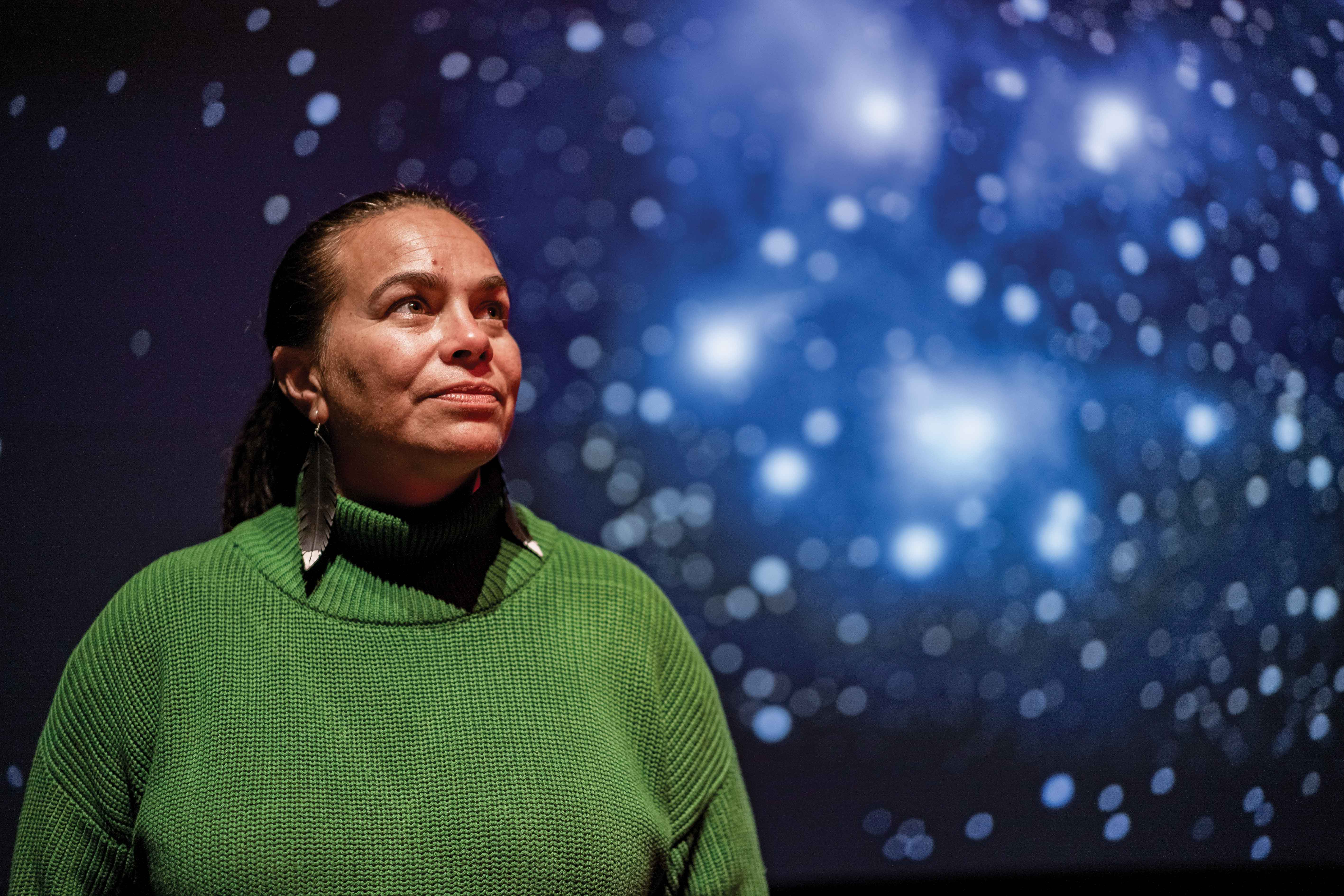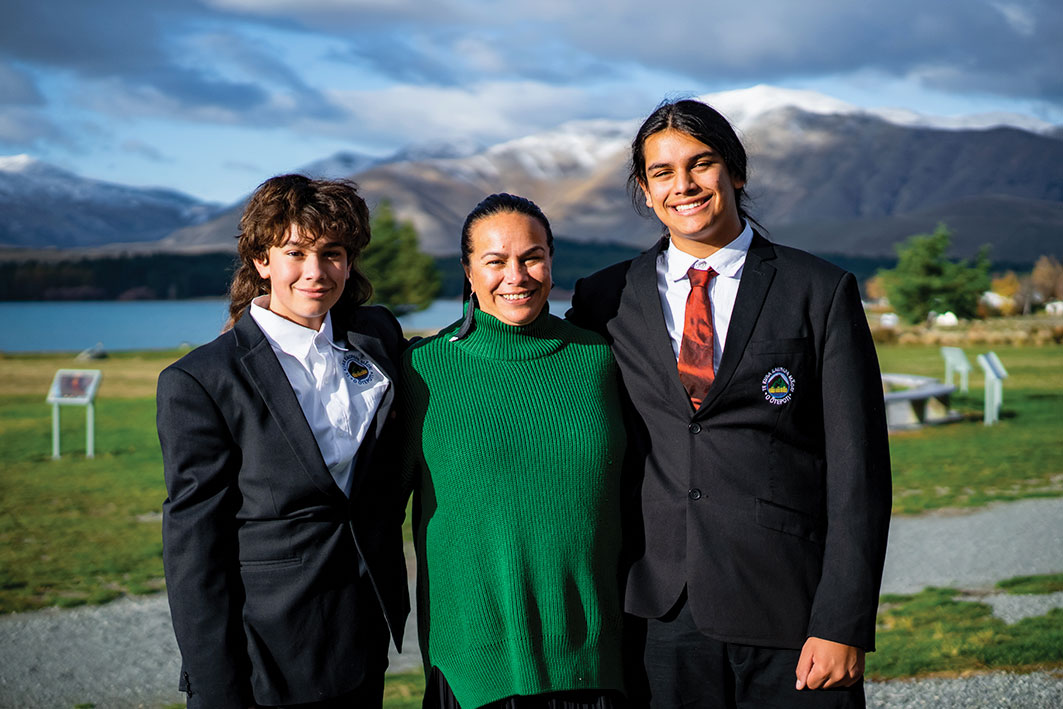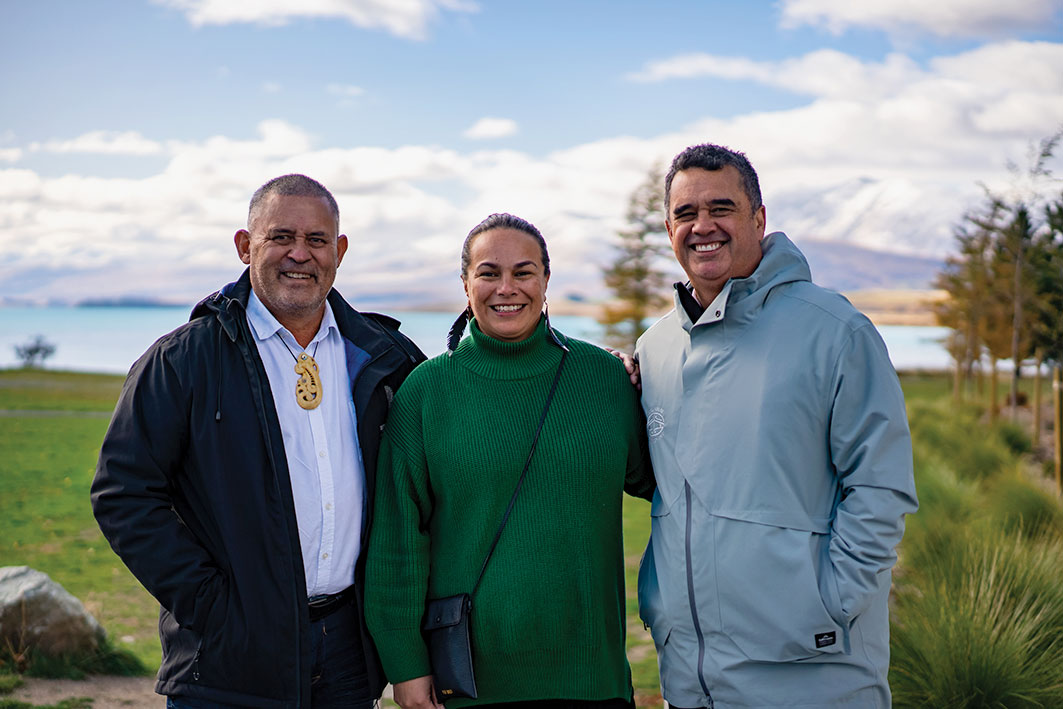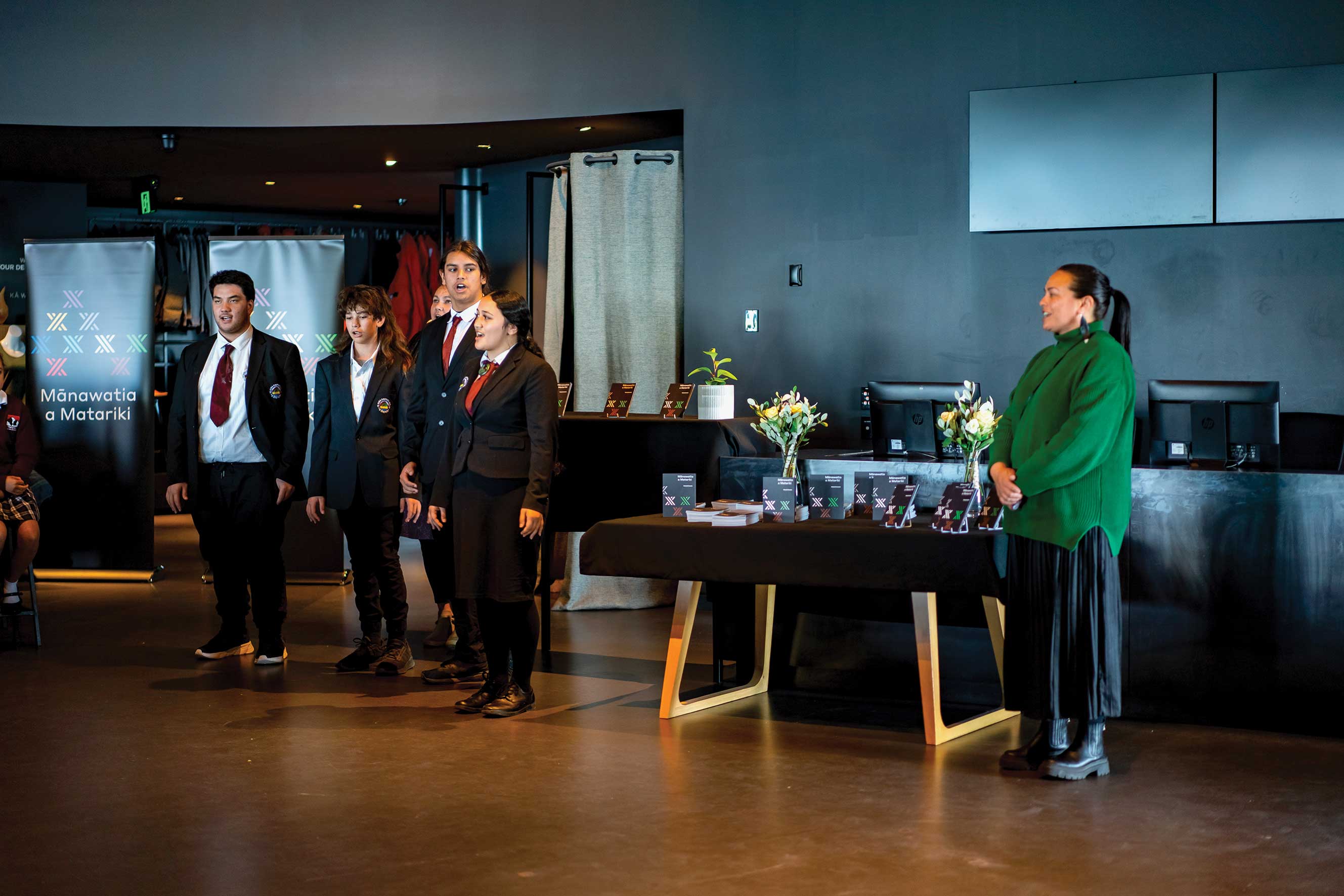Tātai Aroraki
Jul 12, 2023

Kaituhituhi Arielle Kauaeroa met Kāi Tahu astronomer Victoria Campbell in the heartland of Te Waipounamu stargazing – Takapō – for a kōrero just before the setting of Matariki earlier this year. He aha kā hua o tē kōrero nei? The emerging fruits of this conversation? The whakaaro that our people are empowered through the collective revival of our ancestral knowledge. 
We spoke of many things, meandering outwards from the axis of our primary kaupapa: Tātai Aroraki, or Māori celestial knowledge. We talked about parenting; with aroha, with financial ease our forebears never had post-urbanisation. About the pride of raising tamariki as “whānau whai rawa”, without losing the understanding that this ease is a privilege.
We talked about how intergenerational wealth is a gateway to unlocking more space for mātauraka Māori in our day-to-day lives, and that re-indigenising is a path of whai rawa because, additional to the incredible career opportunities and niches this path can create, “mātauraka Māori enriches our lives ten-fold”. And make no mistake, Victoria (Tori) says, learning about and being in a relationship with Matariki and kā whetū is indeed a practice of re-indigenisation.
“When we learn about the stars, we don’t learn about them in isolation. We begin to delve into and deepen our understandings of the concept of time and timekeeping, of seasons, of our tikaka and the reo surrounding these. We can start to connect the dots about our place in te ao Mārama.”
During all this whakawhiti kōrero, Tori sips a Coke Zero against a backdrop of the fading Takapō twilight – a resplendent sight of lake, land, mountains and, of course, the boundless sky. The first whetū reveal themselves over her shoulder, pointers to the kōrero unfolding with generosity across the coffee table in front of us. Despite being one of the most celebrated contemporary Kāi Tahu astronomers – and indeed, the nation – there’s no trace of airs, elitism or withholding of the taoka tuku iho she possesses.
There’s an earthy humility and accessibility to her sharing, making vast ideas and the specific science of astronomy easier to grasp. It’s vitally important, Tori says, for iwi Māori katoa to reclaim our ancestral knowledge of Tātai Aroraki, and that “this isn’t just about the stars and cosmos above,” it can be integral to our sense of wellbeing. Yet she also knows that’s a hard whakaaro to sell, when so many whānau Māori are focused on the basics. A necessity of survival is that it takes up all the space, all the air in the room, so to speak.

Tori with sons Tūmai (16) and Tāwera (13)
As a staunch wahine born and bred from “the hood”, Tori has closely observed many of the challenges colonisation still disproportionately entraps Māori in. With this proximity to hardship, she is also aware of the privilege of being born in a loving home with a mother who taught manaakitaka in action, and a father who valued education.
“I appreciate the balance of being both Māori and Pākehā (my dad is fresh off the boat English). On reflection, I realise that a semi-decent, middle-class education is what set me apart and gave me a lot of opportunities so that I can be here now, in my lane, sharing this mātauraka with our people.
“Growing up, we were rich in love, but not financially. Rather than holding me back, that enabled me to be able to feed myself, to know what kai is, what seasons we’re in and when to harvest what. When we travelled – and we were often travelling between Dunedin to whānau in Christchurch and Oaro – I would always add rubbish bags and knives as the designated driver. That meant we could harvest kai along the way with my mum, aunties, and uncles.”
But how does this translate to the sophisticated oral transmission of astronomy, Tātai Aroraki? Tori explains the significance of linking the mātauraka between kauae ruka – the upper jaw to the universe and our celestial understandings; and kauae raro – the lower jaw of earthly knowledge.
“When we can interpret the tohu within our taiao, and how they play such a significant role in our everyday lives, and in our mahika kai practices, in our navigation, our timekeeping – then we can start to understand how deeply our environment is connected to our health and wellbeing.” Tori offers one example to aid the understanding that observations of Matariki do not occur in isolation.
“When Puaka is in the West and the waka of Taramainuku is setting below the horizon to collect our loved ones who’ve passed on, Puaka should be really bright. This is the tohu for our Kāi Tahu muttonbirders to head to the Tītī Islands. Then the birders come back around the end of May, following Puaka as it rises back up in the East.” Matariki has by then set, officially recognised as descending on the Takaroa moon, a time of potent power and energy. Te Waka o Rangi is the constellation “captained” by star body Taramainuku and is closely associated with Matariki due to the daily task of casting a net to collect the souls of the day’s deceased.
In July, the rising of Matariki – which is embedded in Te Waka o Rangi as te pītau whakarei or the carved figure head – and the waka are observed on the Takaroa moon again, at which time the souls of those passed in the preceding solar cycle are strewn into the night sky. This gives us the well-known saying, kua whetūrangihia koe (you have now become a star). “So, we have the whetū, mahika kai practices, the people and the moon (our maramataka) all moving in relationship with one another.” All these signs tie in with the descent into winter and the rising of Matariki, which Tori has been instrumental in increasing awareness of in Aotearoa, alongside the celebrated fellow Māori astronomer, Dr Rangiānehu Mātāmua (Ngāi Tūhoe).

Jack Thatcher, Tori , Rangi Mātāmua
Although it was through her friend and mentor the celestial world opened to Tori, it was her youthful fascination with the stars – paired with a long and dedicated reclamation of te reo Kāi Tahu – that paved the way, years prior to meeting Mātāmua. After taking up te reo in high school, she found herself majoring in Māori at the University of Otago, eventually gaining a Master of Indigenous Studies. Her command of te reo rakatira landed her “dream job” with Kōtahi Mano Kāika (KMK) and this, she says, is where her obsession with kauae ruka dialed in. “I was supporting Dean Whaanga with a wānaka he was having in Te Anau over a decade ago. His brother, Hemi, worked with Rangi and they were coming down to do research, so we timed it with a wānaka for Murihiku whānau.
“I’d met Rangi a couple of times, as we were both in Māori academic circles. He wanted to meet different whānau from the South to hear our kōrero about kā whetū. And that wānaka was so amazing, life- changing really; I couldn’t see much, couldn’t see any patterns, but I just connected to the beauty of the night sky and realised there was so much I wasn’t seeing in the city.”
Somehow the interconnection of pūrākau, history and whakapapa in Tori’s kete started to become clearer and deepened. After that first “light bulb” moment, she was determined to share what she’d learned by creating resources about Matariki and other navigational stars for KMK.
“I did all the reading, listening and heading across the motu to as many wānaka as I could after that,” she says. “Our tīpuna were clever enough to code all this knowledge into whakataukī, tāniko, pūrākau … and what made it so much easier for me when I came to the stars was, I had the code. My reo journey was a huge key to unlocking kā whetū for me.”
This turning of the “key” has brought Tori and her whānau to a place in time where the stars continue to line up. Through her own business, Tūmai Communications, she consults as a Māori astronomer on all sorts of projects, including her mahi as one of seven Mātauraka Māori practitioners on the Matariki Advisory Group in 2021. This piece of work saw the signing of Te Pire mō te Hararei Tūmatanui o Te Kāhui o Matariki-Te Kāhui o Matariki Public Holiday Bill, enacted last year, and extended to distribution of funding for Matariki celebrations via Te Arawhiti, the Office for Māori Crown Relations.
As collective awareness of Matariki continues to grow, Tori is pragmatic about the demands on her time during the Māori New Year period, often encouraged as a time for rest. “From April through July it’s hectic,” and she reels off the schedule, impressively held in her head. “This year I’m supporting a Matariki rauemi launch here in Takapō, then supporting Irakehu and Poutini whānau at Arahura for the setting of Matariki … got a kōrero with Rāpaki whānau, then my Wairewa whānau, both on their marae in July; I’ve got an offering for the education sector in Ōtautahi, followed by a kōrero with the museum community in Pōneke, supporting the Matariki Mackenzie Festival and Wairewa to bring a busload down for that.
“There’s an initiative with Eat NZ and some Papatipu Rūnanga being involved in that, including Moeraki, Arowhenua, Waihao, Puketeraki and Awarua. The southern Papatipu have an annual kaumātua Matariki breakfast, so I’ll go down there for that too … and it’s all whakapapa, right? These are my southern links that I love to connect with.
“And my kids might not have enjoyed all the tipi haere, but when they grow up they’ll know their landscape, they’ll know their people, and they’ll always be alright with that knowing, no matter what.” Tori is also general manager for Te Rūnanga o Moeraki and will begin a research scholarship in July alongside Otago Museum.
Although her mahi may seem all-encompassing, it’s not the top of the list. Her whānau of four with hoa rakatira Brett and rakatahi Tūmai and Tāwera takes precedence, followed by the whenua Tori and Brett purchased in Twizel at the tail end of Te Manahuna, the South Island’s “dark sky” region.

Tori at the launch of Dr Rangi Mātāmua’s Matariki karakia booklet and online resources with kaiako from Te Kura Kaupapa Māori o Ōtepoti
“Over the summer we’re on our whenua, until I’ve got to go back to mahi and then every weekend until the season turns. Now that we’ve got a cabin – built as a mini-observatory – and wharepaku, we can go there in the winter too. “And that time on whenua, in te taiao, gives us a lot of time for kōrero.
Me, my husband, our boys – and we have great friends whose values and desires for the future align with ours. It’s really scary to transition from the current models of lifestyle, and so doing it together just feels better.”
Tori and Brett have found relatively few people who are genuinely all-in for collective living, and yet are open about their desire for the whenua to stand as papakāika – for their tamariki, their eventual whānau and friends who also align with the kaupapa. “This is a formidable place to live and that keeps you onto it. And honest. “I want to use this privilege I’ve amassed, that no mistake has come with struggle, and I truly understand that it will result in a major power shift, even if just one whānau is engaged with the knowledge in practice. When we look at all the isms that are working against us as indigenous people – you know, racism, colonialism, sexism – if we can feed ourselves with mātauraka mahika kai and are empowering an indigenous system and way of being, then there becomes less demand and reliance on other systems.
“We don’t want to live like this anymore and we never did – our tīpuna were forced and we’re still being forced. But I believe we’re gonna make a comeback.” Tori’s eyes crinkle upwards as she adds with her trademark hard- case attitude: “And I’ve been literally s……. in buckets trying to go the next level on our whenua!
“The big tool is that knowledge is power and I’m going to use all the mātauraka that I hold now to empower as many friends, whānau and allies as possible.”